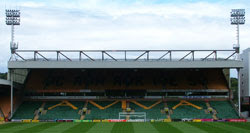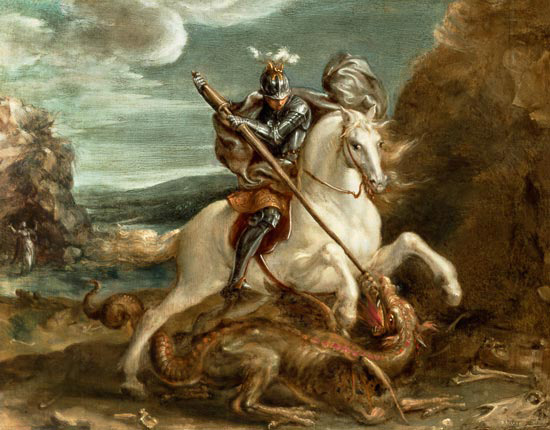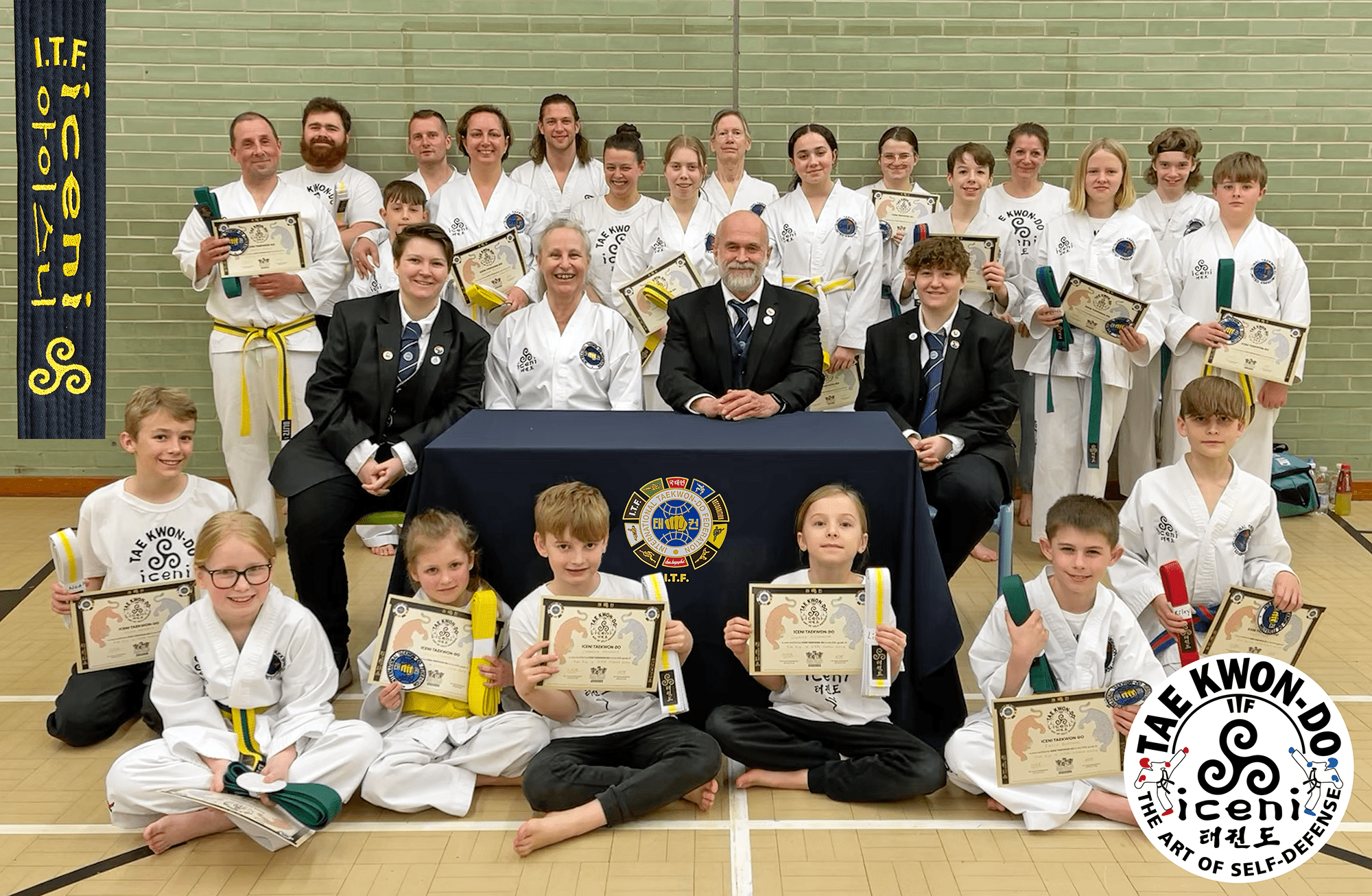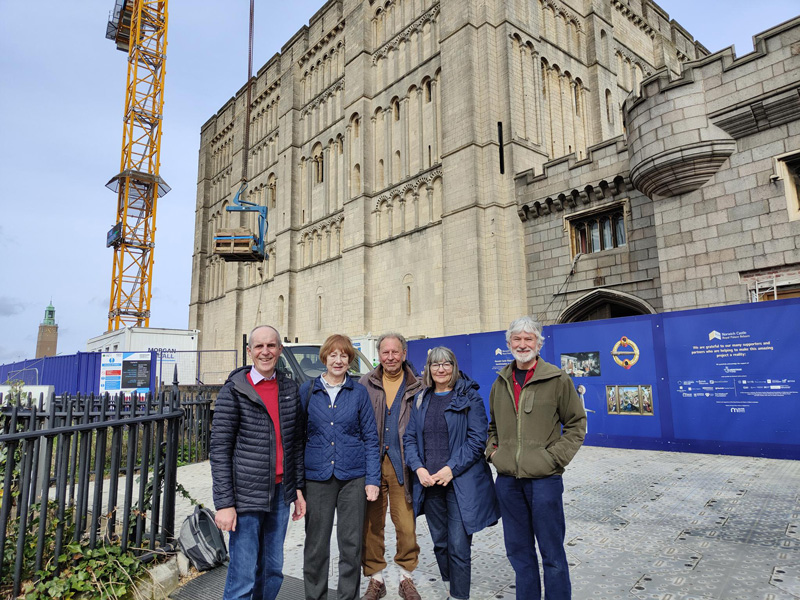“I was never really a Barclay Boy. I was too young in 1970 to be properly involved in any shenanigans that may have gone on in that part of the Carrow Road ground. But even at eleven years of age, I knew it was the place to be. With our first season behind us, when we watched from the South Stand, my pal and I graduated to the Barclay with ease – we just slipped quietly around the corner in fact. A few more friends joined us, so we had our own little gang, all the same age, and week by week we got closer to the pukka Barclay Boys, to be found slap bang in the middle of that all standing terrace.
I can’t easily recollect any footballing memories from the 1970-71 season. Ron Saunders was settled into his position as manager. We finished mid table as we always seemed to do. Attendances were anywhere between ten and fifteen thousand. But I saw little football, despite going to every Saturday match. At less than five feet tall, it really was, come to think of it, pointless standing on the Barclay terrace. Especially as we crept more and more towards the centre. Early on, we worked out that you didn’t want to be too near the front. In moments of unrivalled excitement, the crowd were prone to falling forwards en masse, and at eleven years old that was a pretty scary thought. But higher up on the terrace we were totally dwarfed. I used to have to stand on tip toes just to get a few glimpses of play. If I saw a shot being lined up, I rarely knew the outcome until the crowd reacted. If on another occasion I saw the ball bulging the back of the net, I would have to ask those around me who had scored. I went to Carrow Road each week but I didn’t catch much action.
The attraction of the Barclay to us kids was of course the singing, and the chance to be in with the ‘hard nuts’. Neither I, or any others in our gang, were troublemakers. But we loved being close to those that were. I loved chanting ‘Sing Up The River End’. And ‘Aye O, Aye O, We Are The Barclay Boys’. And perhaps my favourite ‘You’re Going In The River’. Shouting abuse at the caged opposition supporters further along the terrace. Pointing lofted fingers at them. I remember once being led right into the centre of the Barclay so I could get a closer look at the ringleaders – the ones who decided where the fights were going to take place. If something was going off after the game, word spread on the terrace. Plans were drawn up. Rendezvous points agreed. And a small group of them were the decision makers as to which song should be sung next. Half a dozen would get things started, then the rest would pick the song up and join in. I was frankly disappointed. Though older than me, these people were still young men. Quite what I expected I am not sure! Possibly not as fierce as I maybe thought they would be. Dressed in their cherry coloured Doc Martens, some looked like they needed a good meal – it was of course the original skinhead era. There were more followers than instigators, and had my Barclay career lasted any amount of time I would have surely been one of the former. But the impression I am left with all these years later, is that Norwich were never ever in the big league when it came down to hooliganism. The likes of QPR, Birmingham City and Millwall for instance all visited Carrow Road that season. I just always felt that other clubs had many more instigators than we had. I saw many scuffles in and around the ground, especially down Riverside and outside Thorpe Station. I was always appalled just how quickly ‘the followers’ legged it in the opposite direction at the first sign of trouble. Any anticipation of a major battle often faded as we realised the best on offer was a minor skirmish.

I have to say our gang soon got bored of the Barclay way of life, another indication that we really were too young for it. Negotiating a safe journey to and from the ground was always a challenge. Often we were too scared to go via Riverside for fear of ‘going in the river’. And I remember Lower Clarence Road being a trouble hot spot if we went that way, as some of the opposition fans arrived by train, that was their route to the ground too. You needed eyes in the back of your head that is certain. But we never ever got into any bother – the thugs left us alone because we were too small ! Our attention turned to another game – hide and seek. Each week we would get to the ground earlier and earlier. Often we were first to queue at the turnstiles, which I think opened at 12.30. Once into the empty ground a couple of lads would go off and the rest of us had to find them. You could go anywhere in those days from the corner where the Barclay met the Main Stand to the opposite corner where the River End met the Main Stand (apart from the opposition cage which needed a de-tour through the back of the Barclay). As more people came into the ground it was easier to hide of course. But we got behind the burger vans and under the concrete stairways. And chased each other, weaving in and out of the fans as they walked to their places on the terraces. Truthfully, we were a damned nuisance. We often got shouted at. I remember once frightening the life out of an old man as I emerged from under the staircase leading into the South Stand. He threatened to report me and said we would all be banned from Carrow Road. I can also remember a period when we used to sneak a football into the ground and have a kick about in the tunnel behind the South Stand, until supporter traffic made it impossible. By about 2.30 we used to retreat back to the Barclay, squeeze our way onto the now packed terrace, and get down to the singing. I would go home totally cream crackered from all the running around. I used to fall asleep during The Generation Game and my Mum once asked if I went to the football to watch, or did I actually get to play for the Canaries!
The following season, the 1971-72 promotion campaign, I left the Barclay. I had the opportunity to watch City from the Main Stand and spent much of that year gaining illegal entry into the ground, though that is a tale for another time. By the following season I was back, though the gang had split and it was largely a return to being me and my original pal. We stayed in the Barclay until the mid seventies. Football took over. We grew taller and saw much more of the games. We were in Division One for some of that time too and the club were starting to move forward. The singing continued though we dropped the ruder and viler renditions. Suddenly it all seemed rather juvenile, and as we went from thirteen to fifteen years of age, our main worry each match was that City would win and not lose. The game was great back then and I came to realise just how much Norwich City Football Club meant to me.
As it still does today!”
Credit to:
aitch www.canaryseventyninety.blogspot.com










